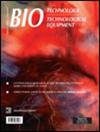甘草WRKY基因家族的鉴定及对非生物胁迫的表达分析
IF 1.4
4区 生物学
Q4 BIOTECHNOLOGY & APPLIED MICROBIOLOGY
引用次数: 0
摘要
WRKY转录因子(TF)控制着高等植物的多种生物过程,包括非生物和生物胁迫反应。在过去的十年中,WRKY基因已经在许多植物物种中被鉴定和功能表征,但尽管取得了这一进展,但对甘草(Glycyrrhiza uralensis Fisch.)中这个TF家族的研究很少。本研究从甘草基因组中鉴定出72个WRKY基因,并将其分为3类。基因结构分析表明,GuWRKY基因含有1 ~ 8个内含子,多数含有2个内含子和3个外显子。保守基序分析在大多数guwrky中发现了保守的WRKY结构域。对启动子区域的进一步分析表明,几乎所有的GuWRKYs都有植物激素或应激响应的顺式调控元件,但元件的数量在各组之间存在差异。在低温(4°C)、盐(150 mmol·L−1 NaCl)、干旱(15%聚乙二醇6000)处理3、6、12和24 h后,通过实时荧光定量PCR (qRT-PCR)进一步探索10个选择的guwrky基因家族在调节非生物胁迫应答中的作用。从而为进一步研究甘草WRKY基因家族的结构和功能提供基础。本文章由计算机程序翻译,如有差异,请以英文原文为准。
WRKY gene family of Licorice (Glycyrrhiza uralensis): identification and expression analysis in response to abiotic stress
WRKY transcription factors (TF) control a variety of biological processes in higher plants, including abiotic and biotic stress responses. WRKY genes have been identified and functionally characterized in many plant species during the past ten years, but despite this progress, few investigations have focused on this TF family in licorice (Glycyrrhiza uralensis Fisch.). This study identified 72 WRKY genes from the licorice genome and classified them into three groups. The gene structure analysis indicated that the GuWRKY genes contain from one to eight introns, with the majority having two introns and three exons. Conserved motif analysis identified the conserved WRKY domain in most GuWRKYs. Further analysis of the promoter region revealed that almost all GuWRKYs had plant hormone- or stress-responsive cis-regulatory elements, with differences in the number of elements among the groups. The role of 10 selected GuWRKYs in regulating abiotic stress responses was further explored via quantitative real-time PCR (qRT-PCR) after low-temperature (4 °C), salt (150 mmol·L−1 NaCl), drought (15% polyethylene glycol 6000) treatments at 3, 6, 12, and 24 h. Thus, our study of the WRKY gene family in licorice provides a basis for further research on the structure and function of WRKY genes.
求助全文
通过发布文献求助,成功后即可免费获取论文全文。
去求助
来源期刊

Biotechnology & Biotechnological Equipment
工程技术-生物工程与应用微生物
CiteScore
3.10
自引率
0.00%
发文量
90
审稿时长
1 months
期刊介绍:
Biotechnology & Biotechnological Equipment (B&BE) is an international open access journal publishing cutting-edge research. A modern world requires modern biotechnology and nanobiology. The journal is a forum that provides society with valuable information for a healthy and better life and promotes “the Science and Culture of Nature”.
The journal publishes original research and reviews with a multidisciplinary perspective; expanded case reports with a focus on molecular medical research and advanced practice in evidence-based medicine are also considered.
 求助内容:
求助内容: 应助结果提醒方式:
应助结果提醒方式:


